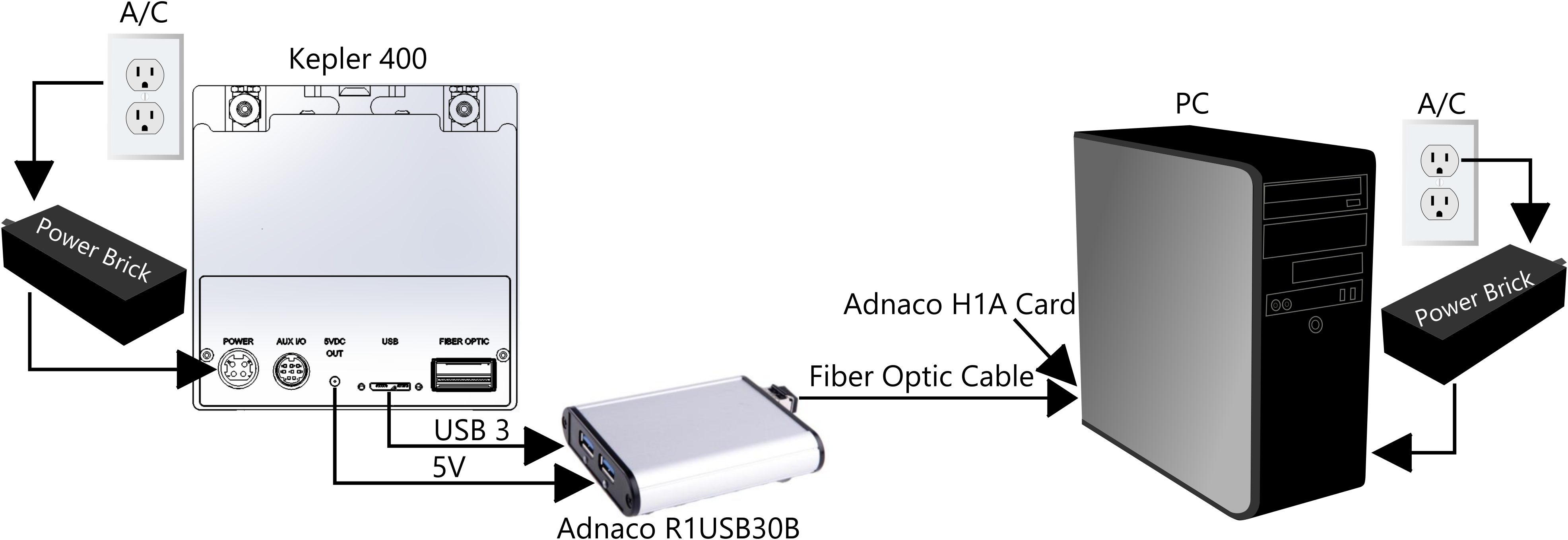
FLI Fiber Optics with Adnaco
FLI offers options to utilize fiber optics to transmit information from computer to camera and from camera to computer. The primary benefit of fiber optics is the significantly extended range compared to USB 3. USB 3 is limited to 3 meters of cable before the cable will fail to successfully transfer data. Fiber optics, on the other hand, can reach over 100 meters without issue.
A secondary, and equally important benefit of fiber optics is that fiber optics does not conduct electricity. With a fiber optical connection, there is protection from a power surge in one location damaging a second location. This is a very beneficial feature for situations where the camera is located off site from the operating computer. If, for example, a lightning strike occurs and damages the camera, the surge of electricity from the lightning would not have a path to the operating camera. Thus, this type of connection can add a secondary layer of protection to important equipment.
Below is a drawing to represent how the fiber optics protects and extends the connection. The camera and the computer can be on completely separate electrical circuits and the use of non-conductive fiber optics cable provides complete electrical isolation. The system below utilizes the Adnaco fiber optics connection.
There are two necessary products for the setup above to operate: the Adnaco R1USB30B, and the Adnaco H1A Card. The R1 is an external device that accepts USB 3 input and outputs a fiber optic signal. The H1A is a PCIe card that must be installed into ones PC. Instructions on operation and setup for these products are available via Adnaco documentation. Visit Adnaco.com for more information.
Beyond product setup and installation on the computer, the FLI camera will operate with the computer exactly as it had prior to the injection of the Adnaco products.

Finger Lakes Instrumentation
200 Tech Park Drive
Rochester NY 14623 USA
200 Tech Park Drive
Rochester NY 14623 USA

Phone: 585-624-3760
Email: sales@flicamera.com
Web: https://flicamera.com
Email: sales@flicamera.com
Web: https://flicamera.com
©2024 Finger Lakes Instrumentation
